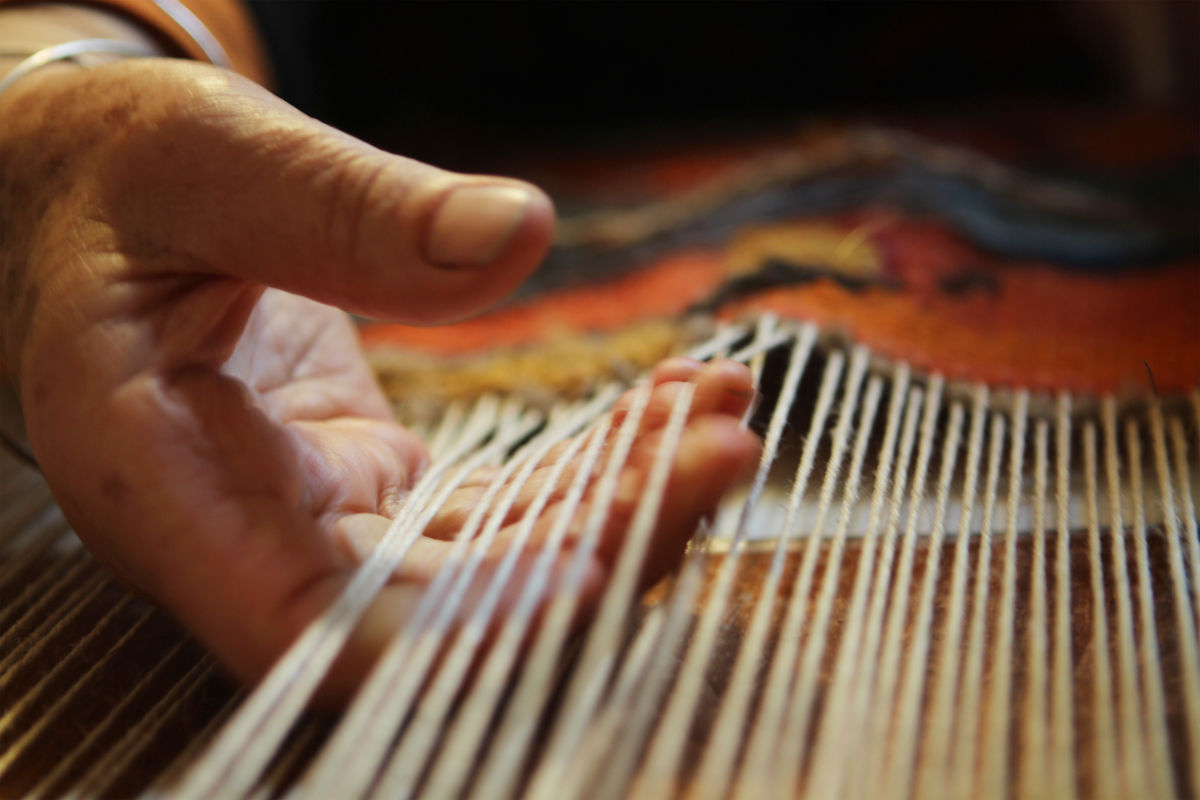Susan Barrett Merrill Artist Statement
My Fiber Art
Susan Barrett Merrill
I am a weaver who creates fiber sculptural masks, based on a technique given to me in a dream. My work is intuitive. I don’t preconceive designs; I look at the colors and textures of yarns I have spun from Maine island sheep and dyed with plants from my garden. As I begin to work, I arrive at some comfort with a visual rhythm or a color combination and that begins to influence the development of the design. As I continue, repetition in basic patterns may play out, or a variation that feels right at a certain point in the process of building the face. The finished face is a mystery waiting to show itself in three dimensions.
The warp-pulling and shaping that bring the face into being don’t solve the mystery. The face itself contains character and an energy, and the mystery remains. Who is this being? I know it came through my hands, from my preferred kind of wool, spun raw from the fleece, and I know I grew or collected the plants that gave their essential colors to the yarns, and I know the face will only be happy in a certain kind of headdress or felted surround.
I know that many people who view the finished work feel a sudden deep connection with a being that feels alive in front of them. Viewers have told me, sometimes with tears, that they feel a spirit enlivening the face, and that they feel this being speaks to an inner place in them. This kind of response is a privilege for me as an artist: something I didn’t deliberately put into my work connects deeply with something in the viewer.
Why, if my work connects so strongly with viewers, do they not more often purchase it? The emotional connections I have seen take place seem to be a completely new and unexpected experience.
Perhaps it is that the work is fiber, an ephemeral form that cannot last forever. Perhaps it is that this work is almost its own genre – masks woven flat and pulled into three dimensions, with extravagant felted coronae are difficult to categorize in people’s minds. Perhaps this in turn is complicated by the West’s fraught relationships with artwork that is a mask: masks are for collecting as indigenous cultural emblems, primarily from Africa, Southeast Asia and the Americas, or else are for Mardi Gras or Halloween. There is little space in between.
I am looking for galleries and collectors bold enough to make a place for masks that are original, as painting and sculpture are original, not based on indigenous history or valued for their cultural connection. My large body of work has arisen from my need to do it. Its origin in a dream makes it my own.
There are historical design techniques with long traditions in the weaving (weft wedging, soumak knotting, kilim-like patterns) and in the felting, such as couched shapes and layered applique. I pursue an ancient art, and I believe these techniques and patterns make up part of the palette of fiber artists of the world.
